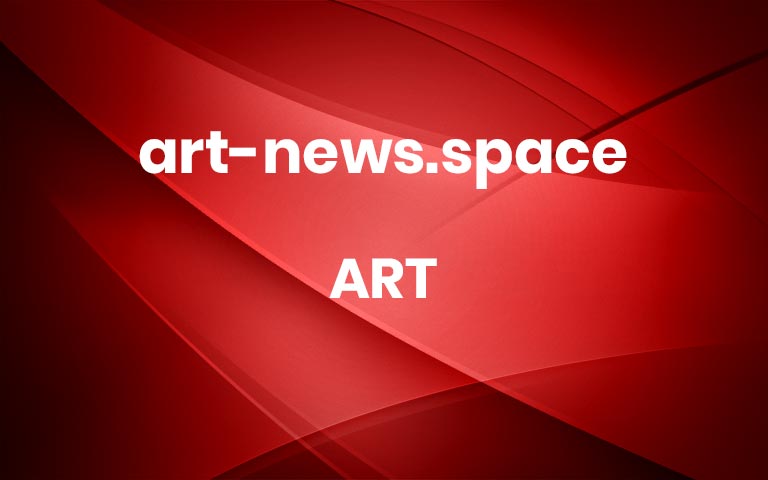‘We AmeRícans’ Celebrates Puerto Rican Community, Pride, and Cultural Hybridity
Ruben Natal-San Miguel, “Home Ruins, Bathroom, Old San Jan, Puerto Rico” (2017), color serigraph/photo silkscreen on canvas, 24 x 36 inches. All images courtesy of Claire Oliver Gallery, shared with permission
‘We AmeRícans’ Celebrates Puerto Rican Community, Pride, and Cultural Hybridity
October 7, 2025
Art
Kate Mothes
Share
Pin
Bookmark
At the end of September, the NFL’s announcement that Puerto Rican star Bad Bunny would be headlining the Super Bowl LX halftime show generated an uproar. He’s one of the most-streamed musical artists in the world, and while many fans rejoiced, the news made waves with conservatives, who take issue with the fact that he predominantly performs in Spanish and has been critical of the current administration. Bad Bunny has since clapped back in an appearance on Saturday Night Live, illuminating the culture war within the polarized U.S. political climate.
It seems fitting, with Puerto Rican Heritage Month just around the corner, that a group exhibition honoring the island commonwealth and its diasporic community opens soon at Claire Oliver Gallery in New York City. We AmeRícans, curated by Ruben Natal-San Miguel, brings together the work of 10 artists whose practices reflect “the history, resilience, and cultural contributions of the Puerto Rican community in New York City and beyond,” the gallery says.
Danielle de Jesus, acrylic on U.S. currency
Through photography, painting, sculpture, printmaking, textiles, and mixed-media compositions, the exhibition highlights Puerto Rican community and identity. The title is drawn from a poem by Tato Laviera titled “AmeRícan,” penned in 1985, a rhythmic and joyous celebration cultural hybridity.
We AmeRícans highlights an intergenerational group of artists, from the acclaimed and established practices of the likes of Carlos Rolón, Carlos Betancourt, and Danielle de Jesus to the fresh perspectives of young and emerging artists like Felix Plaza, Erica Morales, and Elsa María Meléndez.
Natal-San Miguel’s vibrant photographs, for example, draw from his series Puerto Rico: Paradise Ruined, Its Aftermath, in which he documents houses and businesses heavily damaged or destroyed by Hurricane Maria in 2017. Following the storm, thousands of people were forced to abandon their homes. “Between 114,000 and 213,000 Puerto Ricans are estimated to have relocated annually to the U.S. mainland since the hurricane,” the artist says in a statement.
A range of mediums lend themselves to cross-cultural experience. De Jesus meticulously renders a house facade with a Puerto Rican flag onto two U.S. one-dollar bills. Meléndez turns to textiles, on which she embroiders portraits and creates sculptural elements from an array of patterned fabrics. And Betancourt uses a range of found objects to create assemblages, sculptures, and large-scale print installations.
Carlos Betancourt, “Times of Illuminations” (2017-18), mixed media including collected tree toppers, electrical wiring, remote “magic” wand, paint, color pencils, etc, mounted on plywood, 101 x 101 inches
“This exhibition is a celebration and an act of preservation, documenting the creativity, strength, and ongoing impact of Puerto Rican artists across generations,” Natal-San Miguel says. “Through their work, we see not just personal narratives, but the collective story of migration, labor, resilience, and cultural pride.”
We AmeRícans opens in Harlem on November 5 and continues through January 3. See more on Claire Oliver Gallery’s website. You might also enjoy artist Adrián Viajero Román’s portraits that reflect on Puerto Rican diasporic experience.
Elsa María Meléndez, “La Isla de las Nostalgias / The Island of Nostalgias” (2020-24), embroidery on canvas with discarded stuffed stockings and wire, site-specific installation, 156 x 170 inches
Ruben Natal-San Miguel, “Home Ruins, La Perla, Old San Juan, Puerto Rico” (2017), color serigraph/photo silkscreen on canvas, 24 x 36 inches
Beatriz Williams, “Madurando,” (2024), acrylic on canvas, 40 x 30 inches
Wanda Raimundi-Ortiz, (2021), gown created in collaboration with costume designer Kristina Tollefson. Image of Wanda Raimundi-Ortiz during a dress rehearsal for the performance “Exodus Pilgrimage” (2019), in Orlando. Photo by Dominic DiPaolo
Felix Plaza, “Flora – Rojo y verde” (1999-2020), gum bichromate and silkscreen, individually hand-cut Rives BFK and other papers, 30 x 22.5 inches
Carlos Betancourt, “The Future Eternal (Process as Ritual)” (2018), pigmented inkjet on fine art paper, 36 x 36 inches
Dave Ortiz, “Barnito Providencia” (2024), acrylic on canvas, 60 x 48 inches
Erica Morales, “You’re Gonna Lose The House” (2024), spray paint, fabric collage and pencil on paper, 30 x 22 inches
Do stories and artists like this matter to you? Become a Colossal Member now, and support independent arts publishing.
Hide advertising
Save your favorite articles
Get 15% off in the Colossal Shop
Receive members-only newsletter
Give 1% for art supplies in K-12 classrooms
Join us today!
$7/month
$75/year
Explore membership options
Previous articleNext article More




